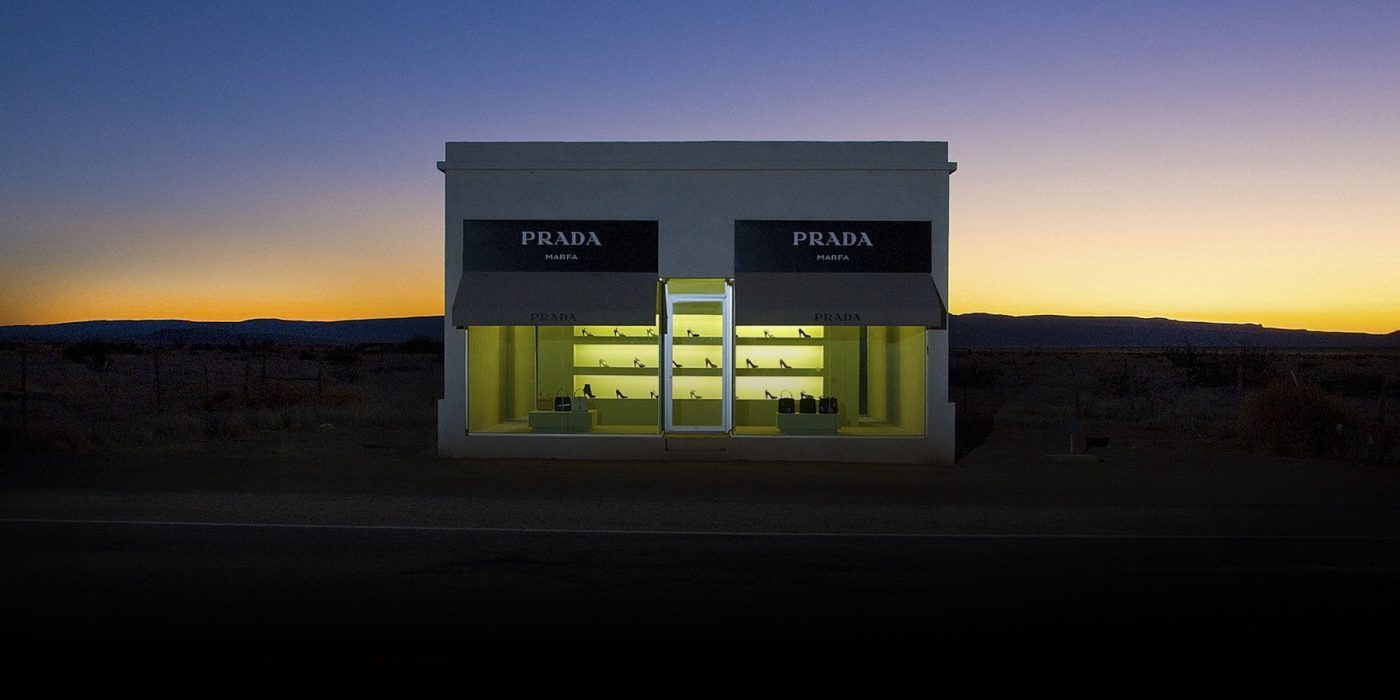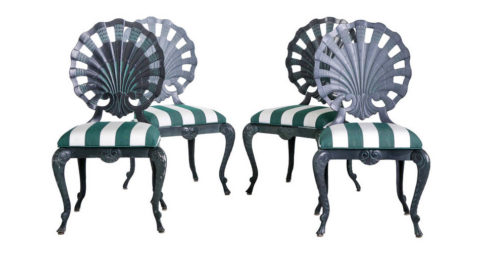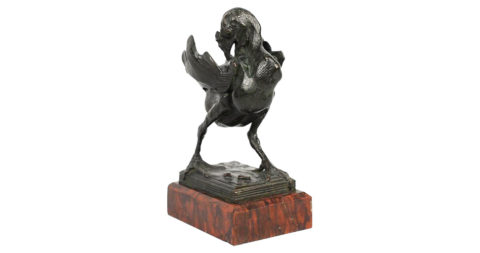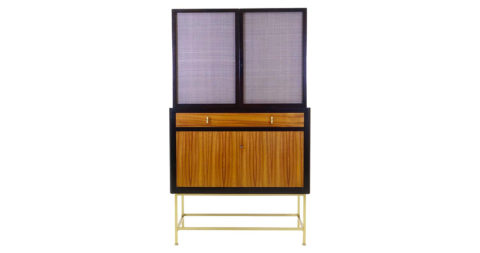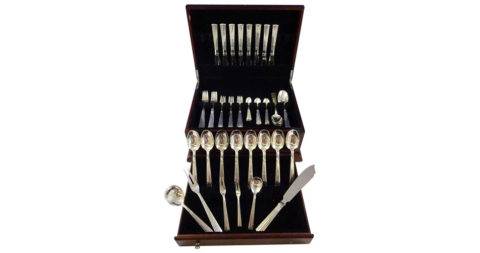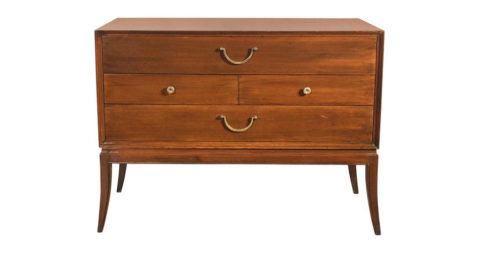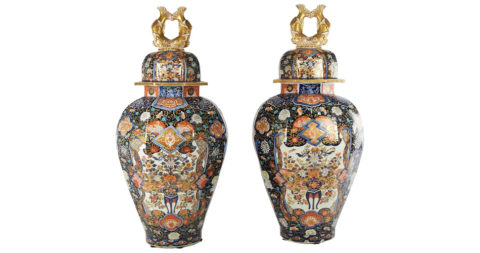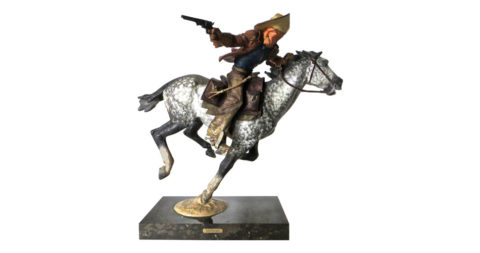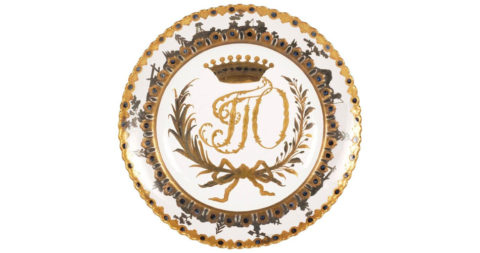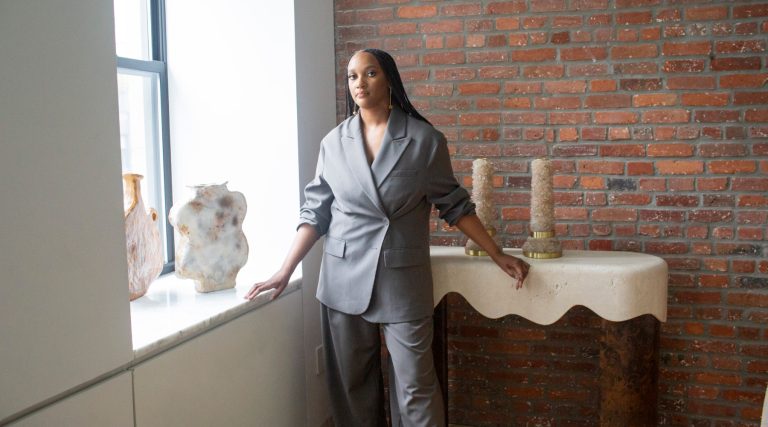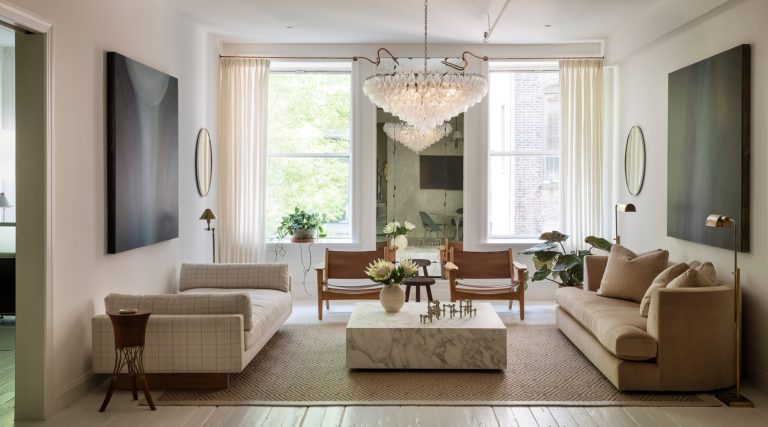
November 7, 2016Warehouse 414, in Topeka, Kansas, and similar off-the-beaten-path galleries may be far from coastal design hubs like New York and Los Angeles, but that doesn’t mean their stocks of rare and covetable finds should be ignored — quite the opposite, in fact (photo by Stephen Smith). Top: Photographer Noel Kerns’s Prada Marfa, offered by ArtStar, is emblematic of the treasures that can be found in even the most far-flung, seemingly surprising locations.
Trucks with New York and California plates no longer pull up at Chris Grandmontagne’s Topeka warehouse to haul away Art Deco, Heywood-Wakefield and other vintage furnishings gleaned from Kansas farmhouses and estate sales — at least not in the numbers they did when she and her husband, John, both native Kansans, started their business in 1989.
“The Internet happened, and the trucks stopped coming,” says Grandmontagne, an interior designer and antiques dealer whose Warehouse 414 is housed in a 13,000-square-foot, 19th-century building formerly used as the power station for Topeka’s electric trolley system. “Once we realized what was happening, we got online too.”
Like other antiques dealers in the hinterland, the Grandmontagnes have found that selling online is a vital part of their business, allowing them to expand their clientele dramatically, from local customers and the sub-culture of pickers who once plied the interstates in cargo vans to people sitting at computers anywhere, anytime.
“I do all my buying locally,” says Grandmontagne, who specializes in pieces of American 20th-century furnishings and lighting like a circa-1950 mahogany cabinet by Tommi Parzinger for Charak Modern. “I get upwards of three calls a day from people who are downsizing or from someone whose mother is moving into a nursing home and needs to sell her things. But we sell and ship to the four corners of the earth.”

Specializing in signed mid-century modern furniture by the likes of Knoll, George Nelson, Charles and Ray Eames and Herman Miller, Retro Inferno occupies an 11,000-square-foot former office-machine store, originally built in 1964, in Kansas City, Missouri’s Crossroads Arts District. Photo by Hannah Carr
Antiques dealers today have the best of both worlds: the unprecedented global reach of the Internet, plus, if they choose, the local marketing base and storage space that come with having a brick-and-mortar store. It’s a combo that makes it easier than ever for vintage shops to thrive outside major metropolitan areas.
The existence of quality dealers in off-the-beaten-path spots has advantages for customers, too. Chief among these is access to a greater quantity of esoteric and regional material than they would find in more design-obsessed urban centers, not to mention lower prices.
At local estate sales and auctions, heartland dealers have the chance to score regional wares that are still concentrated near the site where they were made decades ago: art pottery in Ohio, say, or aluminum housewares in western Pennsylvania, or Navajo jewelry in Arizona. And when a prime piece turns up, there aren’t dozens of savvy collectors and high-end dealers ready to swoop in and snag it.
Cheaper overhead for dealers in smaller cities and towns, and fewer steps from estate sale to eventual new owners, can lead to lower prices for clients. There’s no middleman when you’re buying from the guy who has been “going into hoarders’ houses since before hoarders were even a known species,” points out Rod Parks, owner of Retro Inferno, a mid-century modern emporium in Kansas City, Missouri.
Antiques dealers in the hinterland have found that selling online is a vital part of their business, allowing them to expand their clientele dramatically by reaching people sitting at computers anywhere, anytime.
After growing up in small-town Missouri, Parks paid his dues “pounding the pavement, mapping out every estate sale in town and sleeping in my van the night before a sale to be first in line when the doors opened.” Now, after 24 years in the business, “things come to me,” he says. As a result, he no longer needs to resort to such extreme measures to acquire the wide range of pieces from the 20th century that occupy both his 11,000-square-foot physical storefront in Kansas City’s Crossroads Arts District — a former office-machine store with a zig-zag marquee, built in 1964 — and his 1stdibs one. Among his recent local finds is an exceptional African mahogany Edward Wormley bar cabinet for Dunbar. “There were five major Dunbar showrooms in the U.S., and one was in Kansas City,” Parks explains of the piece’s Midwest provenance.
“Kansas City provided a way to do this on the scale I wanted to do it,” explains Parks. “The price of real estate is an advantage. The downside is there are fewer local interior designers, and tastes tend to be more traditional.” That’s why half of what Parks sells ships to New York. “The Internet has leveled the playing field for people like me.”
Being in a historical decorative arts center like Providence and Philadelphia, both known for their 18th- and 19th-century antiques, has similar advantages, allowing local dealers exceptional access to regional specialties.

A location in northeast Philadelphia gives dealer David Sterner special access to the sorts of antiques for which the area is known, including porcelain from Tucker & Hemphill, which was based in the city in the 1820s and ’30s, and pieces by sculptor Albert Laessle, who lived there. Photo courtesy of David Sterner Antiques
David Sterner’s location in an industrial loft in northeast Philadelphia’s gritty Port Richmond neighborhood gives him entrée to Philly-related material at local estates and auctions. That’s where he picks up much of the antique sculpture, porcelain, ceramics, silver and other decorative objects arrayed on his gallery’s floor-to-ceiling shelves. Among them is an early-20th-century bronze sculpture of a turkey by Albert Laessle, a Philadelphia-based sculptor and master animalier; and a coveted porcelain pitcher by Tucker & Hemphill, the first large-scale American porcelain producer, which operated in Philadelphia from 1826 to 1838. “I sell Tucker porcelain to collectors throughout the country,” says Sterner, an Atlanta native who spent five years learning the antiques business in Tübingen, Germany, “but ninety-five percent of it still comes out of this region, because that’s where it always was.”
Similarly, Rhode Island–made pieces tend to pop up more frequently in the inventory of Providence-based 1stdibs Recognized Dealer Stanley Weiss Collection than they would elsewhere.The gallery, which specializes in fine American and European furniture from the late 17th century to the Civil War, just moved to a new 10,000-square-foot space. On 1stdibs, it is currently offering a curvaceous 1804 Eliza Sweet Wedding Sideboard, made in nearby Newport of blonde Cuban mahogany; and a colonial Rhode Island country piece, a William and Mary maple corner chair with a rush seat from the late 17th or early 18th century.
Thanks to the Internet and the wide-ranging clientele his gallery has built up over 20-plus years, “we do very little selling locally,” says Weiss, originally from Brooklyn. “Our business is all over the country now.”
Online selling is a particular boon for dealers who specialize in items that have niche markets. Good examples are Antique Cupboard, in Big Bend, Wisconsin, which offers 2,000 patterns of sterling silver flatware and hollowware on 1stdibs; and 1stdibs Recognized Dealer John Atzbach Antiques, of Redmond, Washington, whose eponymous owner gave up a banking career in Seattle to travel the world in search of imperial Russian antiques.

Being located in Providence, a historical center of decorative arts and furniture-making, has enabled Stanley Weiss Collection to build up impressive holdings of fine furniture from the late 17th century to the Civil War. The gallery has particular depth in specific types of pieces, like the tilt-top tables seen here. Photo by Marc Beaulac
From his perch in Incline Village, Nevada — a resort town on Lake Tahoe with a year-round population of only about 6,000 — Clive Devenish, also a Recognized Dealer, specializes in antique mechanical coin banks of the late 1800s and early 1900s. He sells to collectors worldwide, some of whom discover his stock through 1stdibs. Devenish’s 40-year-old business occasionally ventures beyond banks into other categories, such as Western art, a natural fit with his location. “I’m in a good position to buy Western paintings and bronzes,” says Devenish, who regularly drives around the West to see artists and collectors and make new acquisitions. On one trip to Cody, Wyoming, he stopped by the home and studio of renowned sculptor Harry Jackson, a visit that eventually led to his purchase of the prototype for Jackson’s 1967 polychromed Pony Express bronze, now available through 1stdibs.

Anthony’s Fine Art and Antiques, in Salt Lake City, Utah, has shipped European pieces from its stock to Paris and Hong Kong, even supplying a complete apartment’s worth of furniture to furnish the London home of the Omani royal family. Here, a Louis XV–style ormolu piano made by John Broadwood & Sons of London takes center stage. Photo courtesy of Anthony’s Fine Art & Antiques
Think Salt Lake City, Utah, is an unlikely spot to find museum-quality fine art and European furnishings? Think again. With the aid of the Internet, Anthony’s Fine Art and Antiques sells such items to clients in places as far-flung as Paris and Hong Kong. “We have no overhead,” says Micah Christensen, son of the 30-plus-year-old business’s founder, who bought the gallery’s building — a 25,000-square-foot former Baptist church in a Greek Revival building — for $600,000 in 1994. Even the royal family of Oman has taken note of Anthony’s selection and competitive pricing. “We shipped an entire flat’s worth of furniture for their London apartment,” says Christensen, who has a doctorate in art history from the University of London.
Perhaps more surprising than Anthony’s international reach is the fact that about 40 percent of its clientele is local. Customers include visitors in the area on ski vacations and employees of Delta and Goldman Sachs, both of which have large offices in Salt Lake City. Other buyers are interested in “quintessentially Western” objects, like the rare circa-1855 Mormon pioneer mule chest, made of pine stained with berries and featuring carved-wood handles in the shape of beehives, that, before it recently sold, stood out among the more than 700 items the dealer is currently offering on 1stdibs.
While the base for many of these off-the-beaten-path dealers is their hometown, others move from urban centers to out-of-the-way locations in order to take advantage of a less stressful lifestyle.
Jason Oliver Nixon, a Florida native and onetime New York City–based magazine editor, can’t believe that he and his Iowa-bred partner, John Loecke, also a refugee from publishing, waited 27 years to move out of Manhattan. They relocated two and a half years ago to a 1930s house in the inland city of High Point, North Carolina, whose population of about 105,000 doubles twice a year when it hosts the world’s largest furniture trade show. The pair established an interior design business, Madcap Cottage, which operates out of what Nixon calls their “laboratory,” in a former pharmacy, and also sells an eclectic mix of antiques and vintage furniture, from Italian Renaissance to Hollywood Regency, through its 1stdibs storefront.

Once movers and shakers in New York publishing, Jason Oliver Nixon and John Loecke decamped for the furniture-making capital High Point, North Carolina, where they now run their interior design and antiques business, Madcap Cottage, from a former pharmacy building. Photo courtesy of Madcap Cottage
“Why didn’t we do this sooner? Driving to our upholsterer in Westchester took two hours,” Nixon recalls of the hassles of running an interiors and antiques business in New York City. “Here we have a tribe of upholsterers, carvers, refinishers — the nicest people, so talented, and right around the corner.”
Nixon and Loecke have found plenty of design-savvy comrades in High Point. “There are very sophisticated, forward-thinking design scenes now in second-tier cities,” Nixon says, citing Palm Springs, California; St. Petersburg, Florida; and Little Rock, Arkansas, which he describes as having “one of the best antiques markets I’ve ever seen.” He and Loecke recently bought an 18th-century Rococo mirror there, which now hangs in their home.
The advent of the Internet has unquestionably transformed the antiques market in the past decade-and-a-half, expanding options and making buying and selling easier for all concerned. But whether business is done in the flesh or via computer, one thing hasn’t changed, for either antiques professionals or civilians, and that’s the thrill of the hunt.
QUICK PICKS
From these off-the-beaten-path dealers
